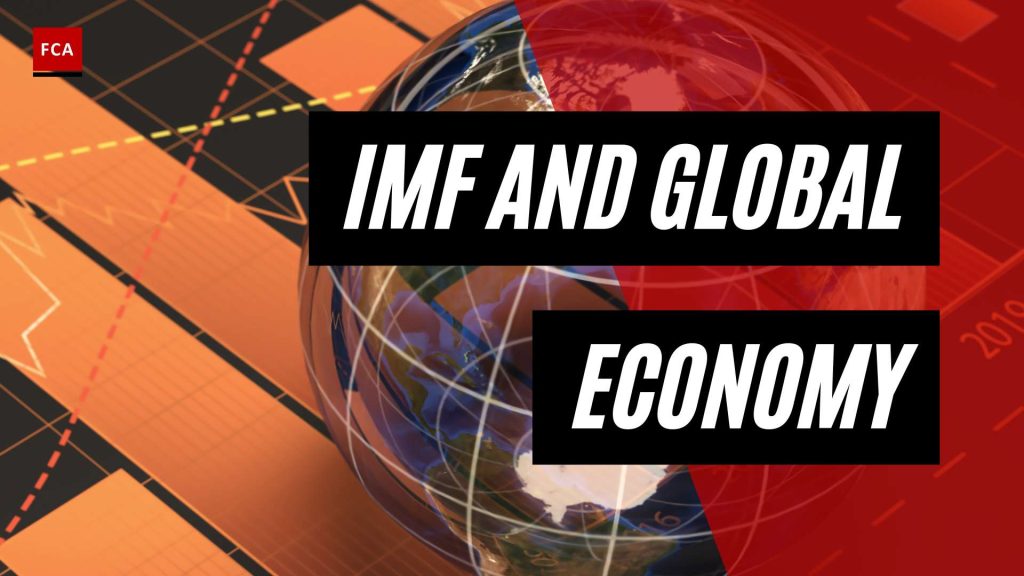Understanding the Origins
To fully appreciate the influence of the International Monetary Fund (IMF) on the global economy, it’s essential to understand its roots and history. The foundation and initial purpose of the IMF were based on the need for economic cooperation and stability, which remains its core focus to this day.
Formation and Initial Purpose
The International Monetary Fund (IMF) was established on December 27, 1945, with 29 member countries in Washington, D.C. However, the seeds were sown months earlier on July 22, 1944, at the United Nations Monetary and Financial Conference, commonly known as the Bretton Woods conference, in New Hampshire.
The IMF was formed in the aftermath of the Great Depression of the 1930s by 44 member countries seeking to build a framework for economic cooperation. The primary aim of this global organization, now consisting of 190 member countries, is to foster global monetary cooperation, secure financial stability, facilitate international trade, promote high employment, and drive sustainable economic growth. By doing so, the IMF seeks to mitigate poverty around the world and create an environment conducive to increasing productivity, job creation, and economic well-being.
Key Events in History
The history of the IMF is marked by several key events that shaped its role and influence in the global economy. These include major economic crises, shifts in global economic balance, and changes in its own policies and strategies.
- 1944: The IMF is established at the Bretton Woods Conference. This meeting, attended by 44 countries, laid the foundation for the post-World War II international monetary system.
- 1950s-1960s: The IMF plays a crucial role in supporting the reconstruction and economic growth of war-torn Europe, financing infrastructure projects and providing policy advice.
- 1970s: The breakdown of the Bretton Woods system of fixed exchange rates presents new challenges for the IMF. It adapts by providing financial support to countries facing balance of payments problems due to rising oil prices.
- 1980s-1990s: The IMF aids in managing the Latin American debt crisis and transitions of Eastern European countries from centrally planned to market economies.
- 2000s-Present: The IMF responds to the global financial crisis by providing large-scale financial assistance to member countries and strengthening its focus on preventing future crises.
As the global economy continues to evolve, so does the role of the IMF. By remaining adaptable and responsive to changing economic conditions, the IMF continues to play a crucial role in maintaining global economic stability. For more information on global economic watchdogs, consider reading about the World Bank Group and the Financial Crimes Enforcement Network (FinCEN).
Structure and Membership
Understanding the structure and member roles of the International Monetary Fund (IMF) provides insight into its functions and influence on the global economy.
Organizational Structure
The IMF’s structure comprises a Board of Governors, an Executive Board, and staff, including the Managing Director and four Deputy Managing Directors. Each of the 190 member countries appoints one governor and one alternate governor to the Board of Governors. The day-to-day work, however, is overseen by a 24-member Executive Board supported by IMF staff. The IMF’s headquarters are located in Washington, D.C., United States (Wikipedia).
Role of Member Countries
The IMF was founded in 1944 by 44 member countries seeking to build a framework for economic cooperation, and as of now, it has near-global membership with 190 member countries (IMF).
Member countries play a crucial role in funding the IMF. Countries contribute funds to the IMF, known as quotas, based broadly on their relative size in the global economy. As of 2021, the total quotas amount to $1.44 trillion, with the largest quotas held by the United States, Japan, China, Germany, and the United Kingdom. These funds are the IMF’s primary source of financing, supplemented by credit arrangements and bilateral borrowing agreements.
| Country | Quota (%) |
|---|---|
| United States | 17.44 |
| Japan | 6.15 |
| China | 6.09 |
| Germany | 5.32 |
| United Kingdom | 4.03 |
The role of member countries extends beyond funding. They are involved in governance, decision-making, and policy setting, contributing to the IMF’s mission of ensuring monetary stability and promoting sustainable economic growth.
Understanding the IMF’s structure and the role of member countries is essential in appreciating its influence on the global economy. For professionals working in compliance, risk management, anti-money laundering, and anti-financial crime, this understanding is crucial, given the IMF’s significant role in setting standards and providing guidance to combat money laundering and the financing of terrorism.
Key Functions and Goals
The International Monetary Fund (IMF) plays a crucial role in the global economy, focusing on maintaining monetary stability and promoting sustainable economic growth among its member countries. Understanding these key functions and goals is essential for professionals working in compliance, risk management, and anti-money laundering.
Ensuring Monetary Stability
The IMF’s primary purpose is to ensure the stability of the international monetary system—the system of exchange rates and international payments that enables countries to transact with each other. Monetary stability is a cornerstone of a healthy global economy, and the IMF plays a significant role in maintaining this stability.
The fund provides financial assistance to member countries experiencing balance of payments problems and supports these countries in economic stabilization. It helps countries correct underlying economic problems, thereby fostering a stable environment for international transactions.
Moreover, the IMF focuses on macroeconomic issues, such as national economic policies, exchange rate stability, and international payments. These areas affect all member countries and play an essential part in the fund’s mission to ensure monetary stability.
Promoting Sustainable Economic Growth
In addition to ensuring monetary stability, the IMF also promotes sustainable economic growth. It offers policy advice, financial assistance in the form of loans, and capacity development through technical assistance and training. These resources help governments implement sound economic policies, which in turn promote sustainable economic growth.
By offering this assistance, the IMF aims to foster international financial stability and economic growth. This work is vital for creating an environment where member countries can thrive economically. Moreover, sustainable economic growth is necessary to combat financial crimes, a key concern for professionals in anti-money laundering and anti-financial crime.
For more information on global anti-money laundering watchdogs and their roles, you can explore our articles on the Financial Crimes Enforcement Network (FinCEN), Office of Foreign Assets Control (OFAC), Basel Committee on Banking Supervision, Egmont Group, Wolfsberg Group, and the Financial Action Task Force (FATF).
Financial Operations and Resources
The International Monetary Fund’s (IMF) financial resources and operations are largely driven by its member countries. Through a combination of member quotas, new arrangements to borrow (NAB), and bilateral borrowing agreements (BBAs), the IMF maintains the capacity to lend to countries that encounter financial difficulties.
Understanding Member Quotas
The IMF’s resources primarily originate from member countries’ capital subscriptions, or quotas, paid upon their membership initiation (IMF). These quotas form a pool from which member countries can borrow if they experience financial difficulties.
Quotas are determined based on a member country’s relative size in the global economy. The 16th quota review concluded in December 2023, approving a 50 percent increase in quotas. To implement their respective quota increases, member countries’ consent is required (IMF).
New Arrangements to Borrow
In addition to quotas, the IMF has the New Arrangements to Borrow (NAB), a set of credit arrangements with member countries and institutions. As of 2021, the NAB contributes approximately SDR 364 billion, or $489 billion, to the IMF’s total resources, doubling its size from the previous year.
Bilateral Borrowing Agreements
The IMF also secures resources through Bilateral Borrowing Agreements (BBAs) with member countries. In 2020, BBAs contributed roughly SDR 141 billion, or $189 billion, to the IMF’s total resources.
| Source | Amount (SDR billion) | Amount (USD billion) |
|---|---|---|
| Member Quotas | N/A | N/A |
| New Arrangements to Borrow | 364 | 489 |
| Bilateral Borrowing Agreements | 141 | 189 |
The IMF’s total resources amount to approximately SDR 982 billion, translating to a lending capacity of around SDR 695 billion or approximately US$932 billion as of mid-December 2023 (IMF).
The understanding of these financial operations and resources is fundamental for professionals working in compliance, risk management, anti-money laundering, and anti-financial crime. This knowledge provides a backdrop to the IMF’s role in global financial stability and its influence on international anti-money laundering (AML) standards. For more on AML and compliance, explore AML risk assessments and the roles of other global AML watchdogs, such as the Financial Action Task Force (FATF) and the Basel Committee on Banking Supervision.
Role in Global Economic Health
The International Monetary Fund (IMF) plays an instrumental role in ensuring global economic health. This is achieved through two main pathways: crisis management and financial assistance, and policy advice and training.
Crisis Management and Financial Assistance
The IMF provides crucial support to member countries experiencing balance of payments problems, supporting economic stabilization, and aiding in the correction of underlying economic issues. This support is often in the form of short-term financial assistance, which can include loans with conditions designed to address the underlying economic problems.
Such assistance plays a pivotal role in enabling countries to manage financial crises, stabilize their economies, and restore growth. Working in tandem with other global organizations like the World Bank Group, it ensures a more coordinated and effective response to economic crises.
Policy Advice and Training
In addition to providing financial assistance, the IMF also offers policy advice and training to its member countries. This includes monitoring economic and financial developments, advising countries, and recommending policies to maintain stability and prevent crises in the international monetary system.
Moreover, the IMF provides capacity development through technical assistance and training. This helps governments implement sound economic policies and effectively manage their economies (IMF). From providing insights on fiscal policy to offering advice on regulatory frameworks, the IMF’s policy advice and training services play a crucial role in fostering economic stability and growth.
By offering financial assistance and policy advice, the IMF helps to maintain international financial stability and promote sustainable economic growth. It works closely with other international organizations, including the Financial Action Task Force (FATF), the Basel Committee on Banking Supervision, and the Egmont Group, to combat financial crimes and ensure adherence to global standards.
For professionals in the anti-money laundering and anti-financial crime sectors, understanding the role and influence of the IMF can aid in better navigating the complex landscape of global economic health. For deeper insights into the importance of global AML watchdogs, consider exploring further topics such as AML risk assessments and the roles of entities like the Office of Foreign Assets Control (OFAC) and the Financial Crimes Enforcement Network (FinCEN).
Major Accomplishments and Challenges
Just as with any global organization, the International Monetary Fund (IMF) has seen its share of both triumphs and setbacks. This section explores some of the IMF’s notable success stories, as well as the controversies and criticisms it has faced over time.
Success Stories
The IMF has been instrumental in stabilizing economies and restoring financial stability during times of crisis. For example, during the Asian financial crisis in the late 1990s, the IMF provided financial assistance to countries like South Korea, Thailand, and Indonesia, helping them implement necessary reforms and recover from the crisis IMF.
Likewise, during the global financial crisis of 2008-2009, the IMF provided emergency loans and policy advice to countries such as Greece, Ireland, and Portugal, helping them address their fiscal challenges and restore market confidence IMF.
The IMF’s policy advice and technical assistance have also contributed to the successful economic transformations of several countries. For instance, countries like Poland, Estonia, and Chile have implemented IMF-recommended reforms, leading to sustained economic growth, improved governance, and poverty reduction IMF.
Furthermore, the IMF has been actively involved in promoting debt relief initiatives for heavily indebted poor countries (HIPC) and low-income countries. Through initiatives like the Heavily Indebted Poor Countries Initiative (HIPC) and the Multilateral Debt Relief Initiative (MDRI), the IMF has helped reduce the debt burden of many countries, freeing up resources for social and economic development IMF.
Controversies and Criticisms
Despite these successes, the IMF has faced a number of criticisms. Some argue that the stringent conditions attached to its financial assistance can exacerbate social and economic hardships in borrowing countries. Critics also claim that the IMF’s policy advice often prioritizes fiscal austerity measures over social spending, leading to negative social impacts Investopedia.
The IMF has been accused of exacerbating income inequality in some countries through its policy recommendations. Critics argue that the IMF’s focus on fiscal consolidation and market-oriented reforms can disproportionately affect vulnerable populations, leading to widening income gaps and social unrest Investopedia.
The IMF’s role in the Asian financial crisis of the late 1990s has also been criticized. Some argue that the IMF’s policy prescriptions, such as strict fiscal austerity measures and financial sector liberalization, worsened the crisis and prolonged the economic downturn in affected countries Investopedia.
Accusations of dominance by advanced economies, particularly the United States and European countries, have also plagued the IMF. Critics argue that this dominance undermines the representation and voice of developing countries in the IMF’s decision-making process Investopedia.
Lastly, the IMF has faced criticism for its perceived lack of transparency and accountability. Some argue that the IMF’s decision-making processes and negotiations with borrowing countries are not sufficiently transparent, leading to concerns about the legitimacy and fairness of its actions Investopedia.
These accomplishments and challenges illustrate the complexity of the IMF’s role in navigating the global economy. As a key player in the fight against financial crimes, the IMF’s actions and policies continue to have far-reaching impacts on global economic health and stability.









